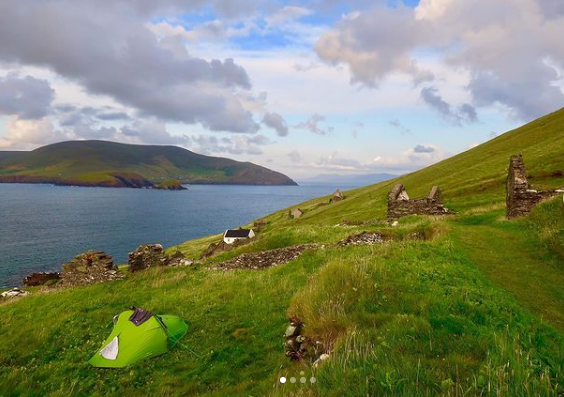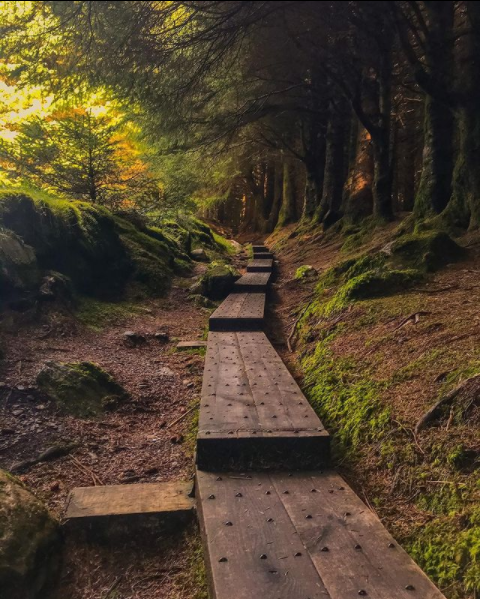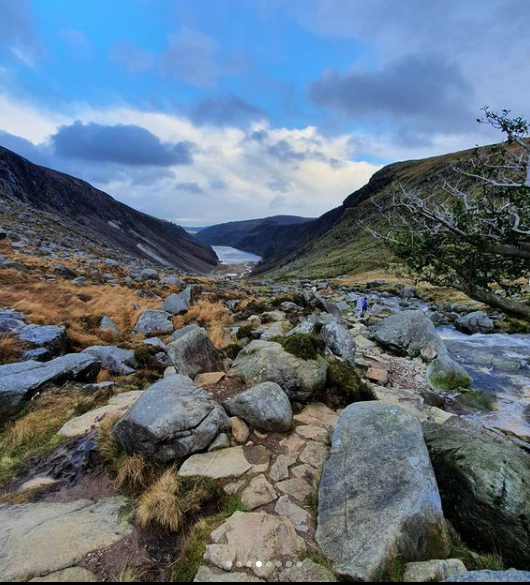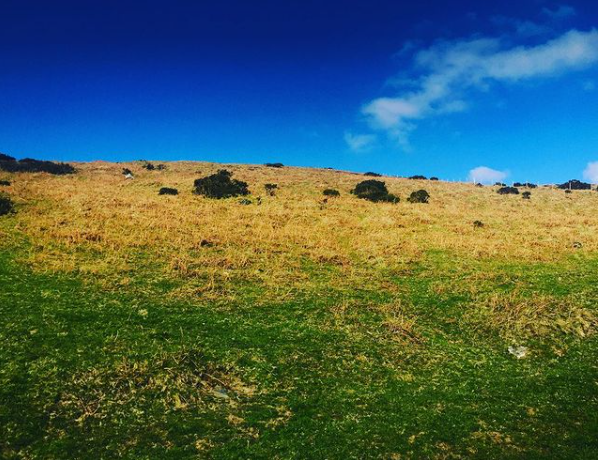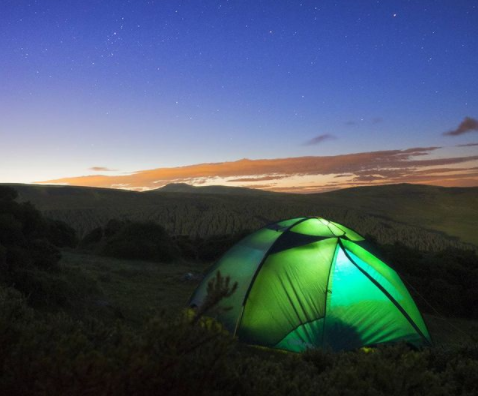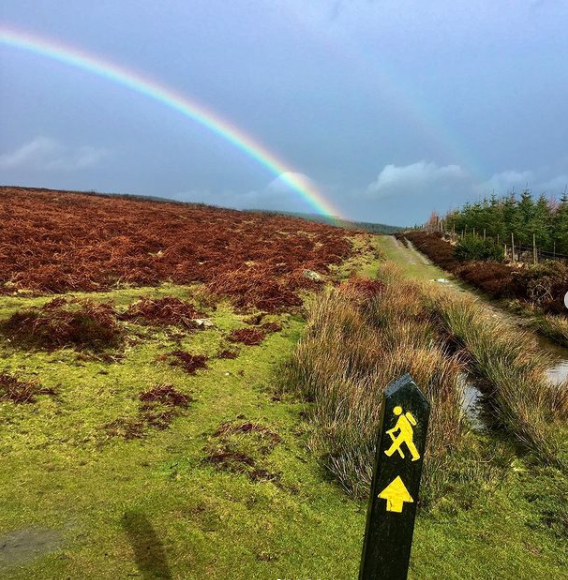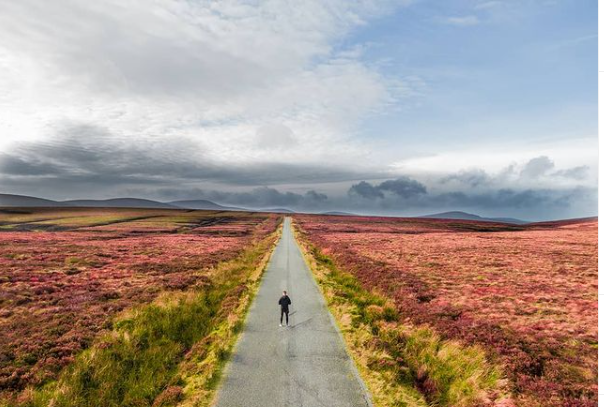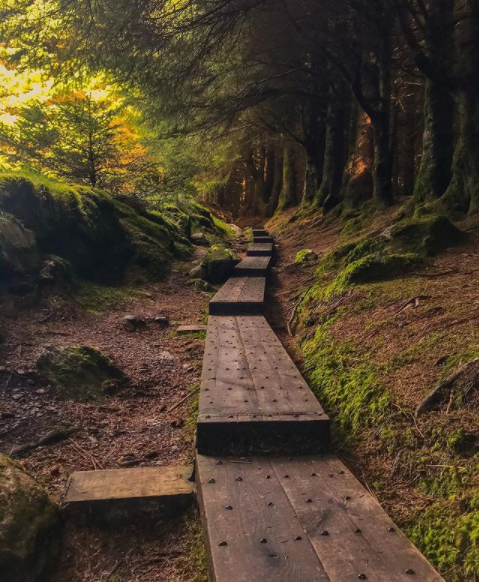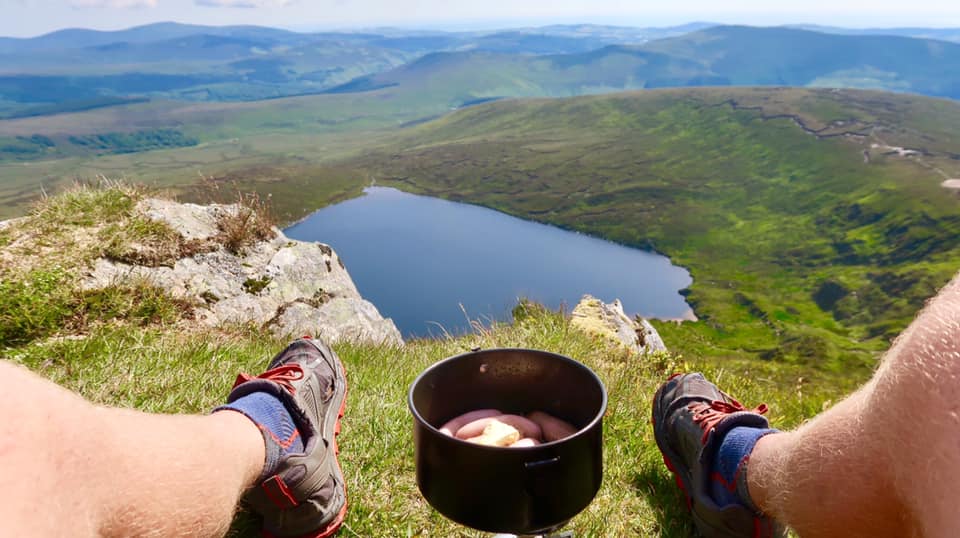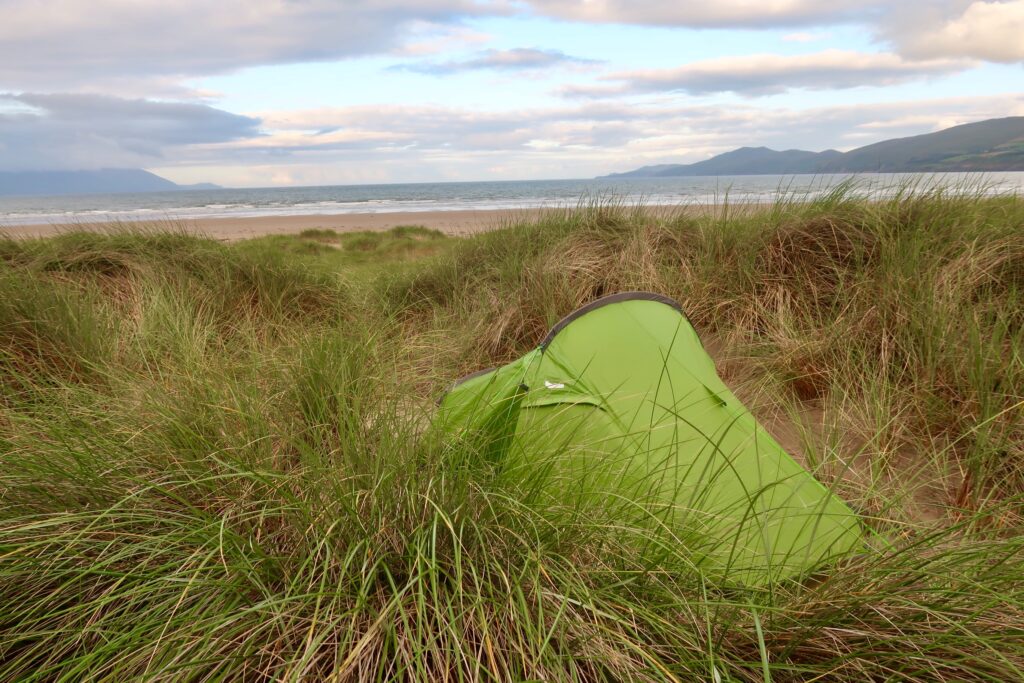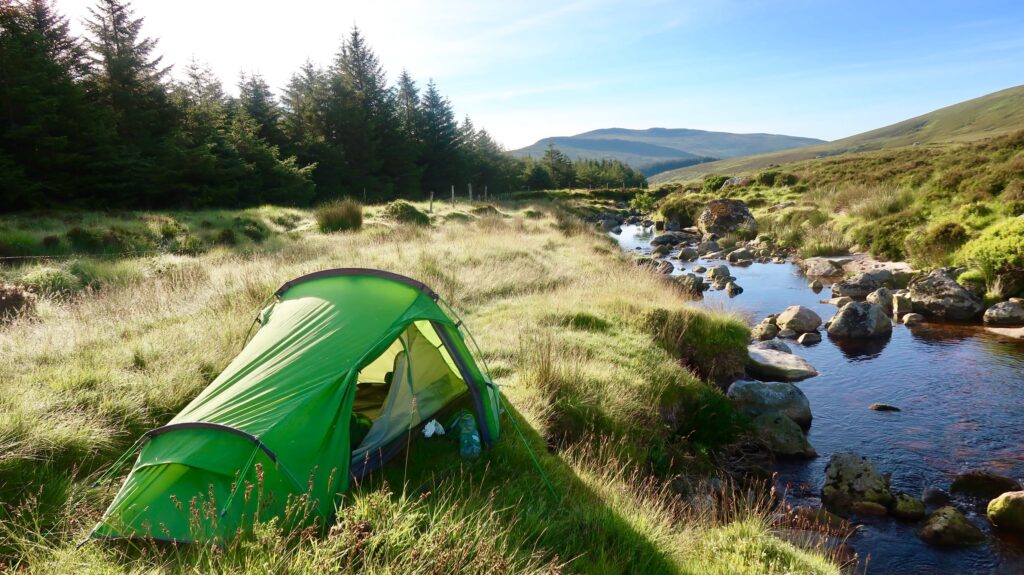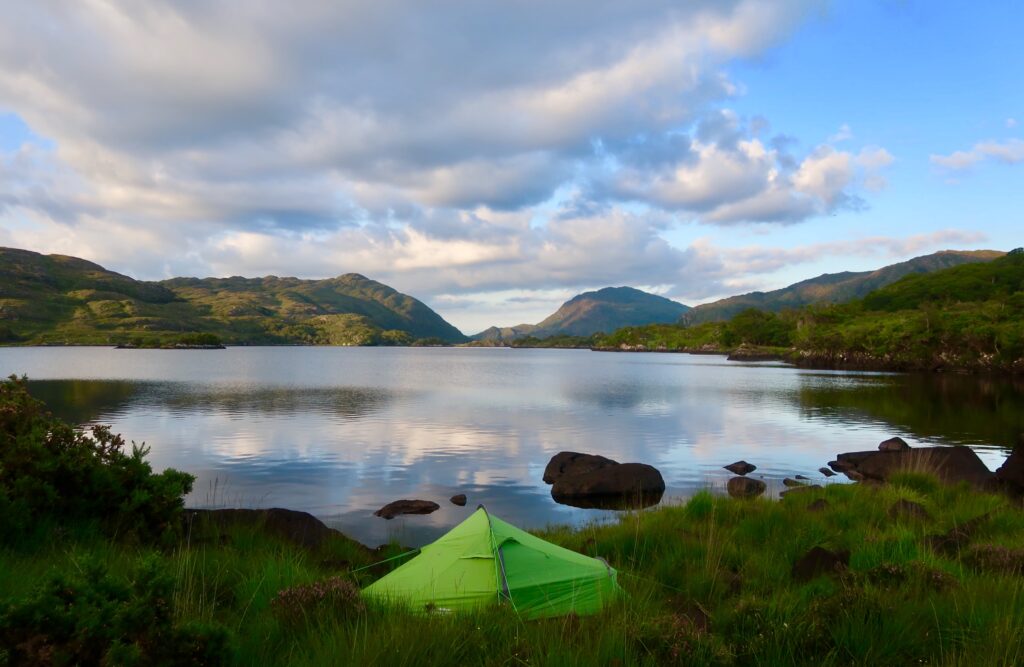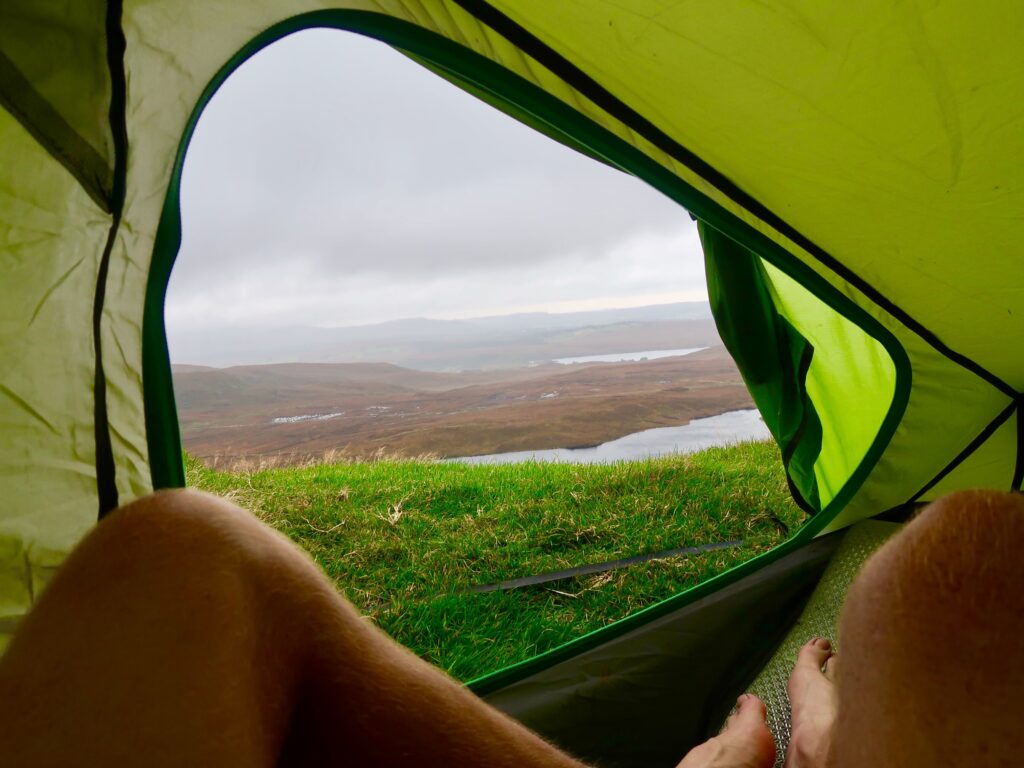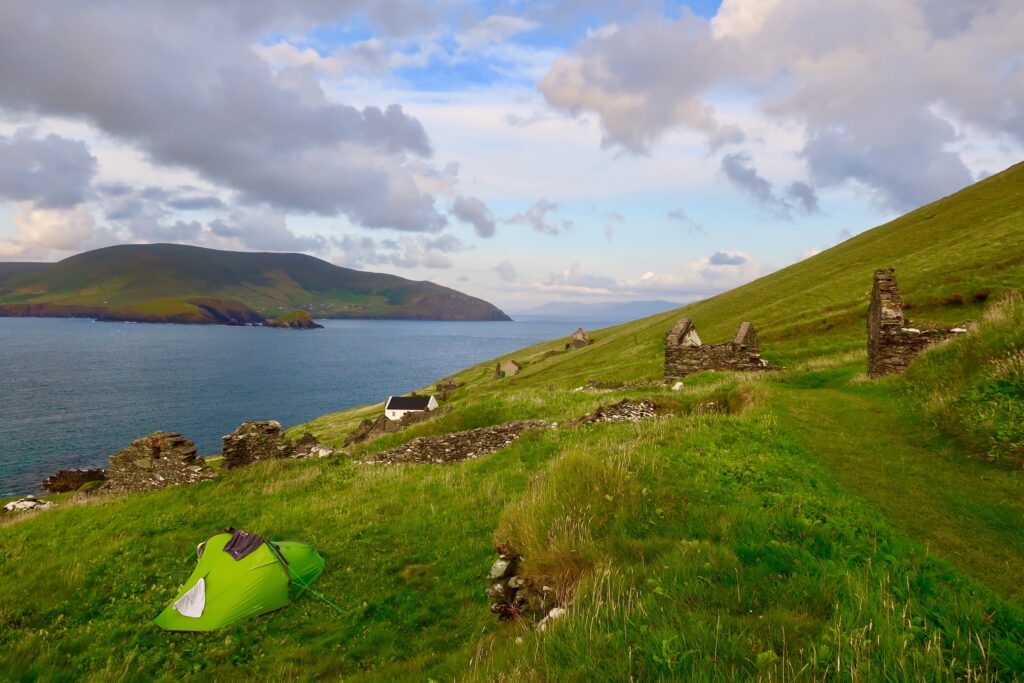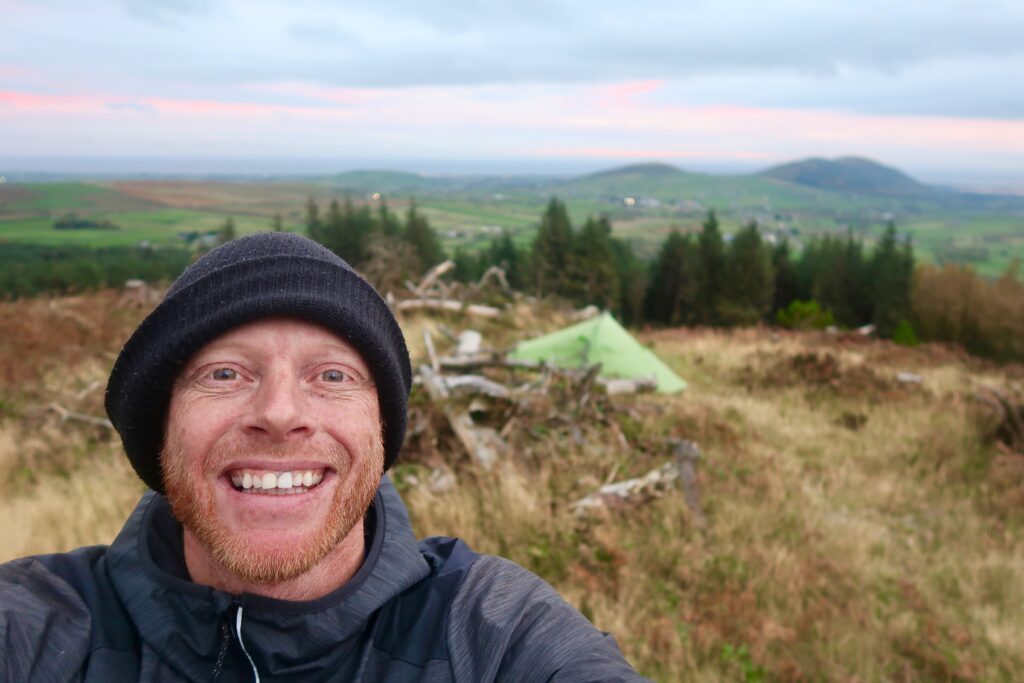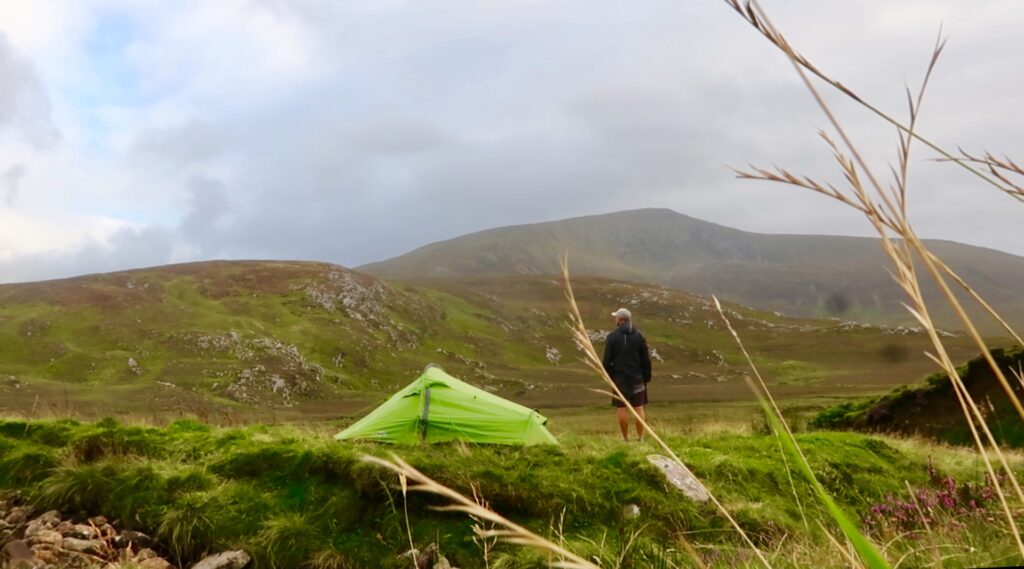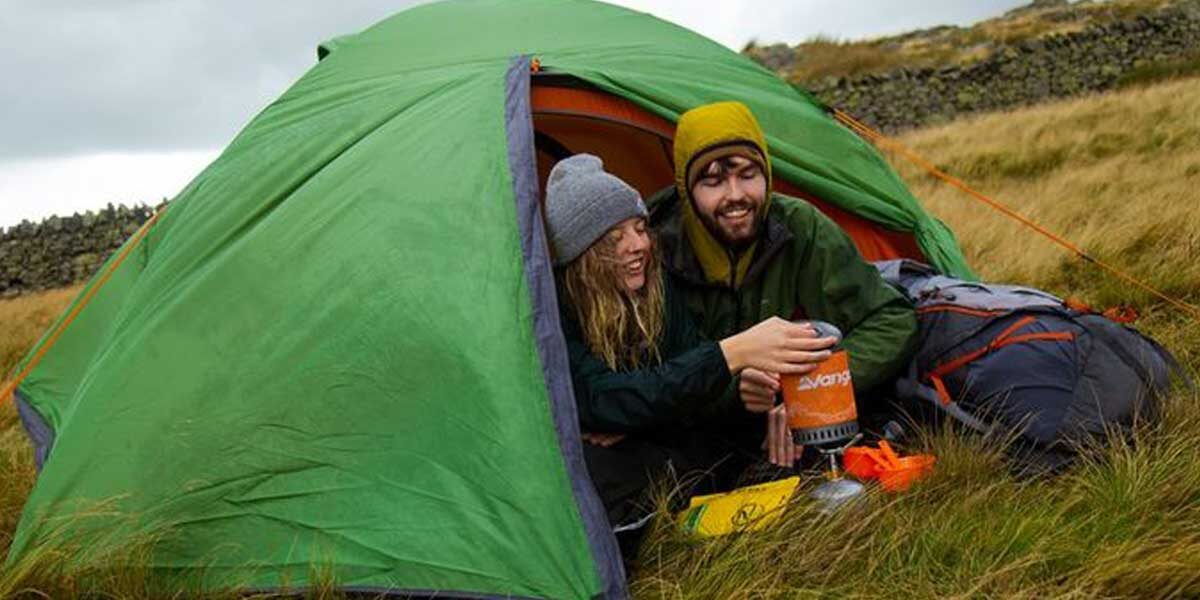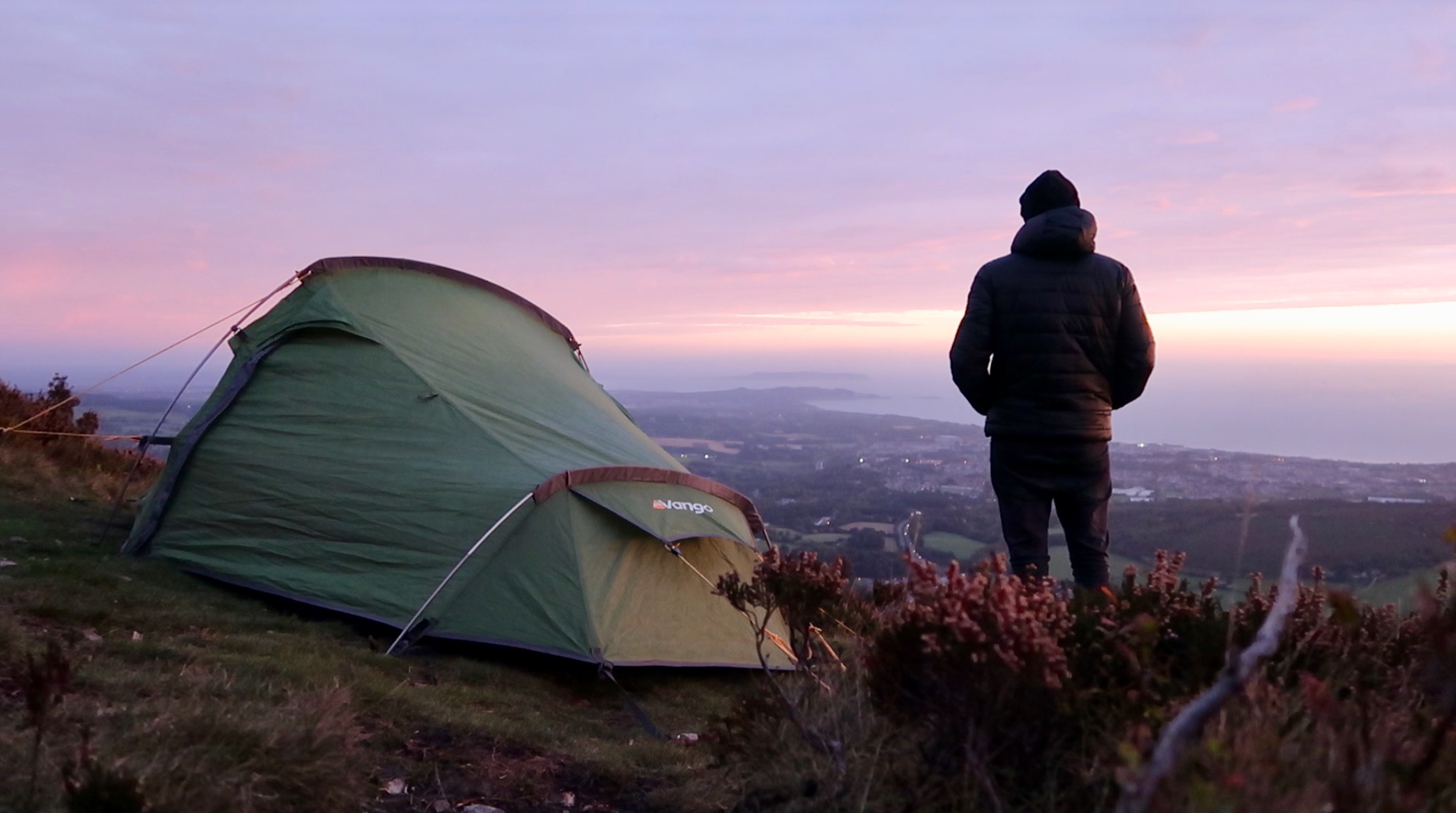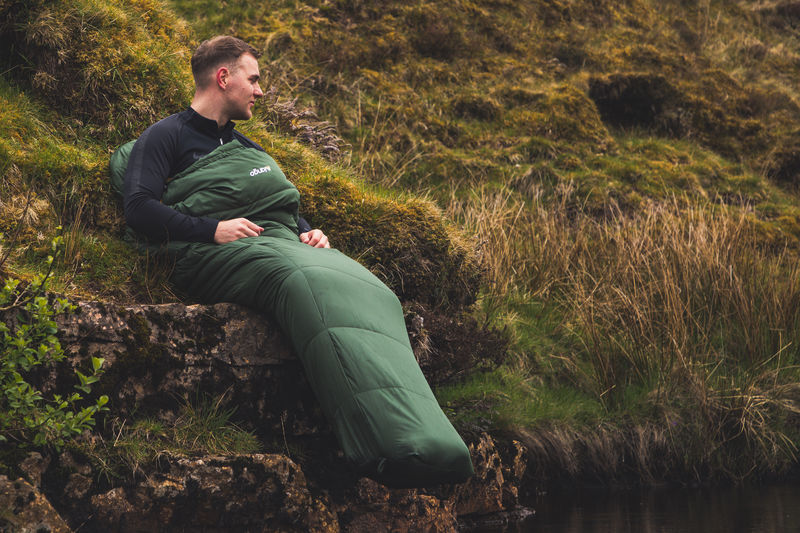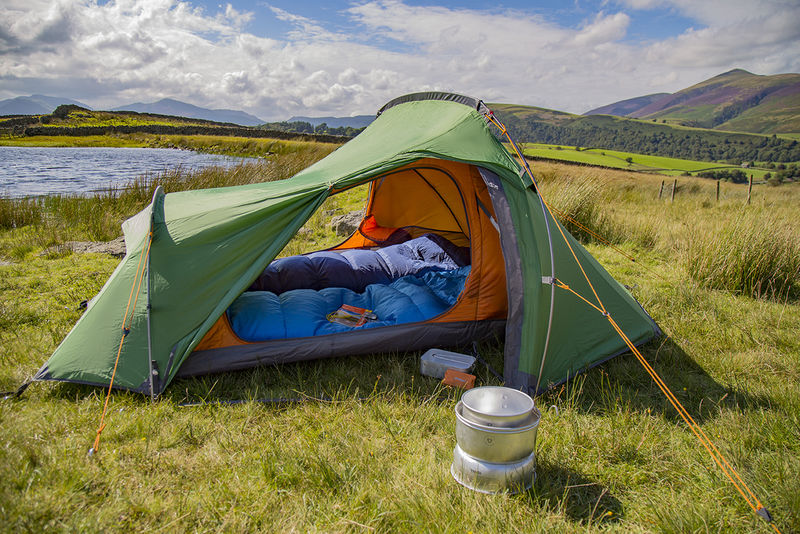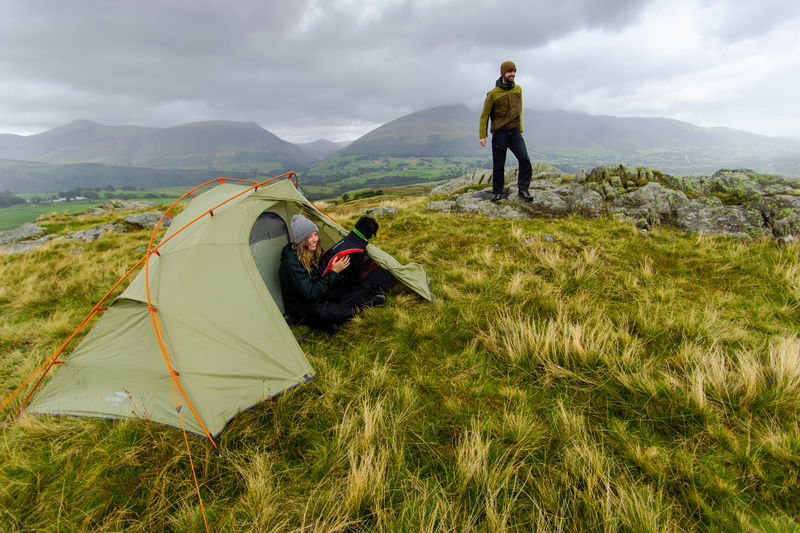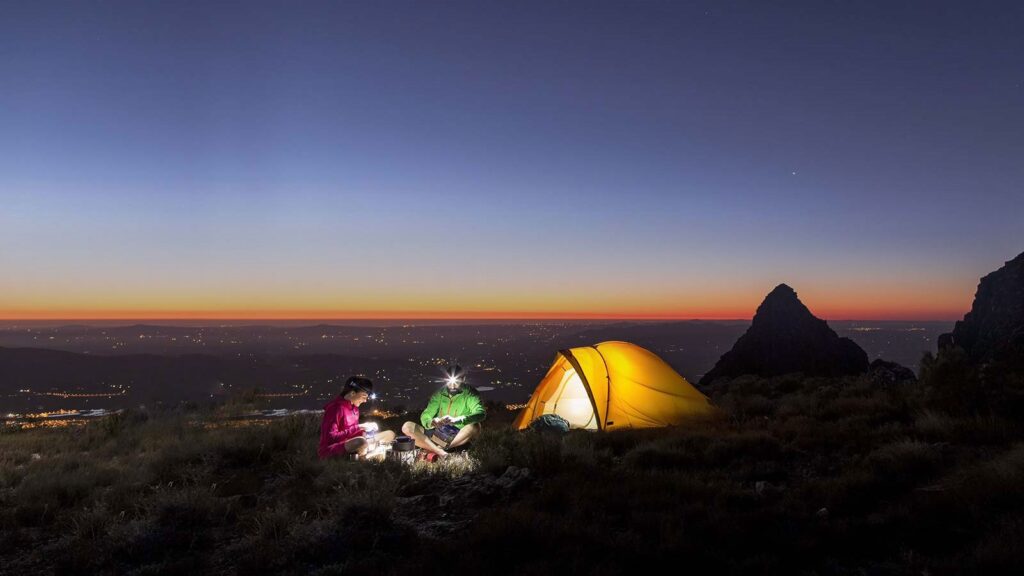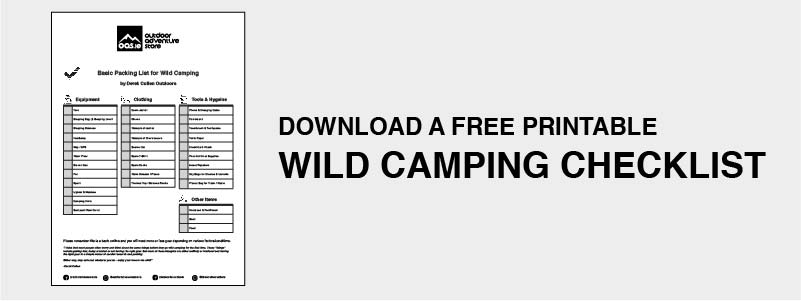I know what it’s like to worry about what might happen on your first wild camping trip. My mid-twenties were dominated by acute anxieties. This didn’t bode very well for someone who wanted to experiment with wild camping. It was also these fears that helped bring about the confidence I have today. It’s also why I spend so much time encouraging others to get out and enjoy what the wild has to offer.
In this article, I talk about how to plan your first wild camping adventure. Also, why you should be mindful of any fears or reasons that might be stopping you.
Afraid to Take Your First Wild Camping Adventure?
We all have the same fears when it comes to wild camping. These are primal fears that can cause chaos for the limbic side of the brain. As you may know, this is the “chimp” part of the brain that likes to make decisions quick and fast. It’s also the side of the brain that causes all sorts of stress and anxiety. However, there are some points I would like to share about fear and the anxiety that can come before and during any wild camping trip.
– Fear is a good thing and will keep you safe on a wild camping trip.
– Most fears are irrational and highly unlikely to happen.
– Fear is something you can manage.
– Fear creates excitement and adds to the sense of adventure.
I know it might not feel this way for first-timers but fear or danger is often responsible for the sense of excitement we feel on an adventure. The truth is, I was very scared on my first few wild camping trips in Ireland. I was not only afraid of getting lost or stranded but also quite terrified of ax-murderers, angry farmers, and the banshee. This was the reason I camped right beside the infamous Hellfire Club in the Dublin mountains one night – to face my fear of the supernatural.
Anyway, you get my point, we all have certain thoughts that cause anxiety. This is certainly true when wild camping for the first time. You might want less of this fear but this will come naturally through experience. In my own opinion, these fears dissipate over time and you should be left with a comfortable sense of excitement.
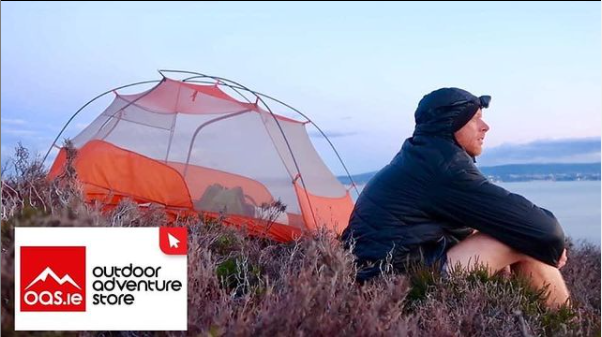
How to Actually Plan Your First Wild Camping Adventure
1. Pick Out Some Potential Wild Camping Spots
It’s important to have a decent idea in terms of where you are going on your first wild camping adventure. This not only refers to the actual hiking trail but also the general area you’ll pitch your tent. But how can you know this area or spot?
I used to go out for day hikes and use these short trips to scout for potential wild camping spots. This was a great load off my mind when it came time to go out with the intention of camping. This didn’t mean I had to camp in that particular spot. But rather I now had a backup camp spot that I could use in the event of not finding another.
That being said, most of my wild camping spots are chosen without any “recon”. In these instances, I look at a GPS map and mark a few forested areas as my provisional camp spots. I don’t particularly enjoy camping in the forest but it’s often a dry hospitable place to wild camp. I might also mention that I always make sure to choose spots away from towns or civilization in general.
2. Make a Packing List and Prepare for the Unexpected
It should go without saying that making a wild camping packing list is super important. This list is responsible for keeping you safe and a fool-proof way to prepare for the unexpected. As a rule, it’s helpful not to carry too much but wise to carry more than you think you’ll need. For example, it’s okay to be “too warm” in the outdoors but never good to feel cold. So carrying sufficient warm gear for cold weather is most important such as Trespass Gear. Similarly, you should always carry rain gear and spare clothes in a dry bag.
On one of my very first wild camping trips, I ended up in a bad storm and all of my gear got wet due to my own stupidity. It was my tiny emergency blanket (space blanket) that saved the day and allowed me to sleep or stay safe that night. I will never take a trip without one and the same goes for my small first aid emergency kit. While I’ve only ever used the panadol in my first aid kit, I carry one in order to prepare for the unexpected.
Feel free to check out my wild camping packing list here.
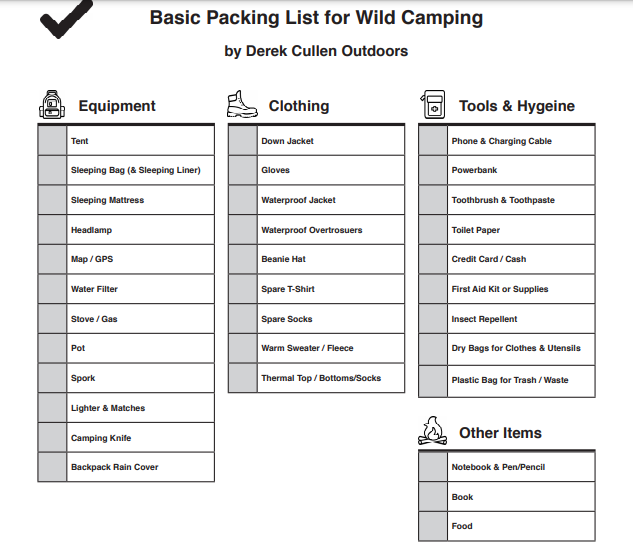
3. Make Sure Electronics are Fully Charged and Carry a Powerbank
I like to use my outdoor adventures as a means of escaping the noise and busy nature of modern life. This includes technology which means my smartphone is only really used for navigation or taking photos. That’s why the smartphone is incredibly important, for your safety relies on it.
I always make sure everything is fully charged and my electronics are stored inside a reliable dry bag. This is also where I keep my charging cables and a decent power bank. I like the TP Link 15600amh or the Anker Powerbank. I cannot tell you how many times my smartphone has died unexpectedly and this power bank has saved the day. Yes, I can revert to paper maps but let’s be honest, having a fully charged phone is not only useful but also great peace of mind.
4. Have a Plan for Cooking, Food, and Water
Cooking is one of my favourite things about wild camping. It’s not that I love cooking but the fact that nothing beats a warm meal in the wild. You also want to keep things simple. This is why I usually stick with simple ideas like these quick and easy meals by Wayfarer. For lunch, I sometimes carry bagels with cheese or a pot noodle. For snacks throughout the day, I bring a mix between biscuits, cereal bars, and pastries.
Try to take note of rivers and potential water sources on your route. Don’t depend on these sources but use them whenever available. Remember that staying hydrated will keep you healthy and fit. You can do this by drinking water as much as possible – especially upon waking up and anytime “you don’t really feel like it”.
Of course, you will also need a camping stove to boil water or cook meals and the MSR pocket rocket is a small and lightweight option that I like to carry on overnight trips.
– Dioralyte is great for staying hydrated and Berocca is good for a boost of energy.
– Cereal bars are healthier than chocolate bars.
– Always carry a lot of water and try to camp near a water source.
– Carry a lighter AND a box of matches.
– Oats/porridge is a nice hot meal that packs a lot of energy.
– Coffee is filled with energy and a great boost for the mood in the mornings.
Note – I carry at least one backup meal and a spare box of cereal bars for emergencies.
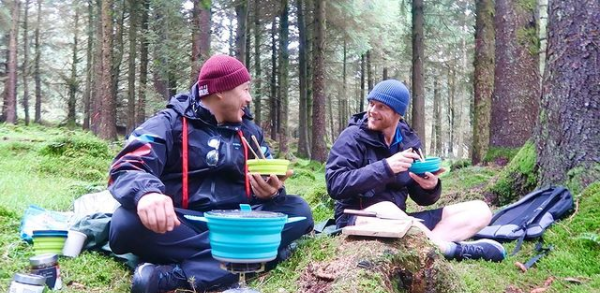
5. Tell Someone Where You Are Going
I used to feel like it was almost a bit childish to contact my brother before going out for a night in the wilderness. In fact, I often pretended there was another reason for these texts and left my destination plans at the end.
However, after spending so long in the hiking community, I’ve come to appreciate the very real reasons why you should always tell someone where you are going. There are lots of rescue stories and you only need to follow Mountaineering Ireland to see some of these. There are also many instances that don’t have a happy ending. I think the story of David O’Sullivan on the Pacific Crest Trail was the one that affected me the most. David, from Cork, is thought to have gotten lost on this trail in America. I’ve been sending out these text messages with destinations/maps ever since.
This brings me to the next point…
6. Use Paper Maps and GPS (and Maybe a SPOT Device)
I don’t really use paper maps anymore but you will usually find one in my backpack. It’s not that GPS is unreliable but rather that electronics are prone to error and failure. Whether it loses power or gets wet, a phone is always at risk in this sense. And yes, it might be unlikely but you should carry a paper map in case of the unexpected.
I carry these Ordinance Survey paper maps in my backpack.
As for GPS, there are several apps out there. Hiiker and AllTrails provide various features for trails in Ireland. Maps.Me is a simple alternative which I use a lot.
Quick Note – SPOT is a tracking device that uses a satellite network to facilitate GPS tracking and texts in hard-to-reach places. This means you can text a friend from almost anywhere in the world. You can even provide a map that uses this device to show your location. I normally recommend hikers invest in one of these for long-distance trips in the wild. It’s a good idea to have one regardless of where you go.
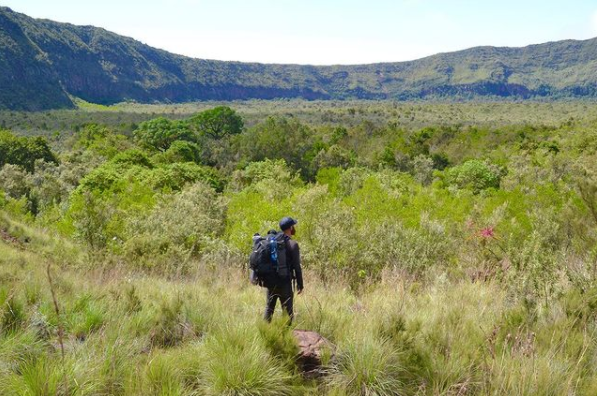
7. By All Means Plan Ahead but Most Importantly – START!
I announce the start date of my long-distance trips on social media for one reason – accountability. I know that by announcing this date, the trip is far more likely to happen. I’m not suggesting you announce your wild camping trip online but highlighting the fact that getting started is never easy. There’s just always a reason to wait or put off an adventure. It’s worth embracing whatever helps you take that first step. My advice is to set a day or date and commit to making a start.
A Final Word about Your First Wild Camping Adventure
I’d like to finish up this article by saying that you never regret the adventure. I’ve had some serious fails and miserable times on the trail but there was always something to learn. As a tip of the hat to Henry David Thoreau, let me say that I go wild camping because I wish to live deliberately and see what I might learn and not, “when I came to die, discover that I had not lived.”
Enjoy and remember that fear will always disappear in the face of confidence. This is why wild camping is an experience, not a competition.

